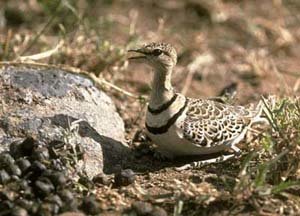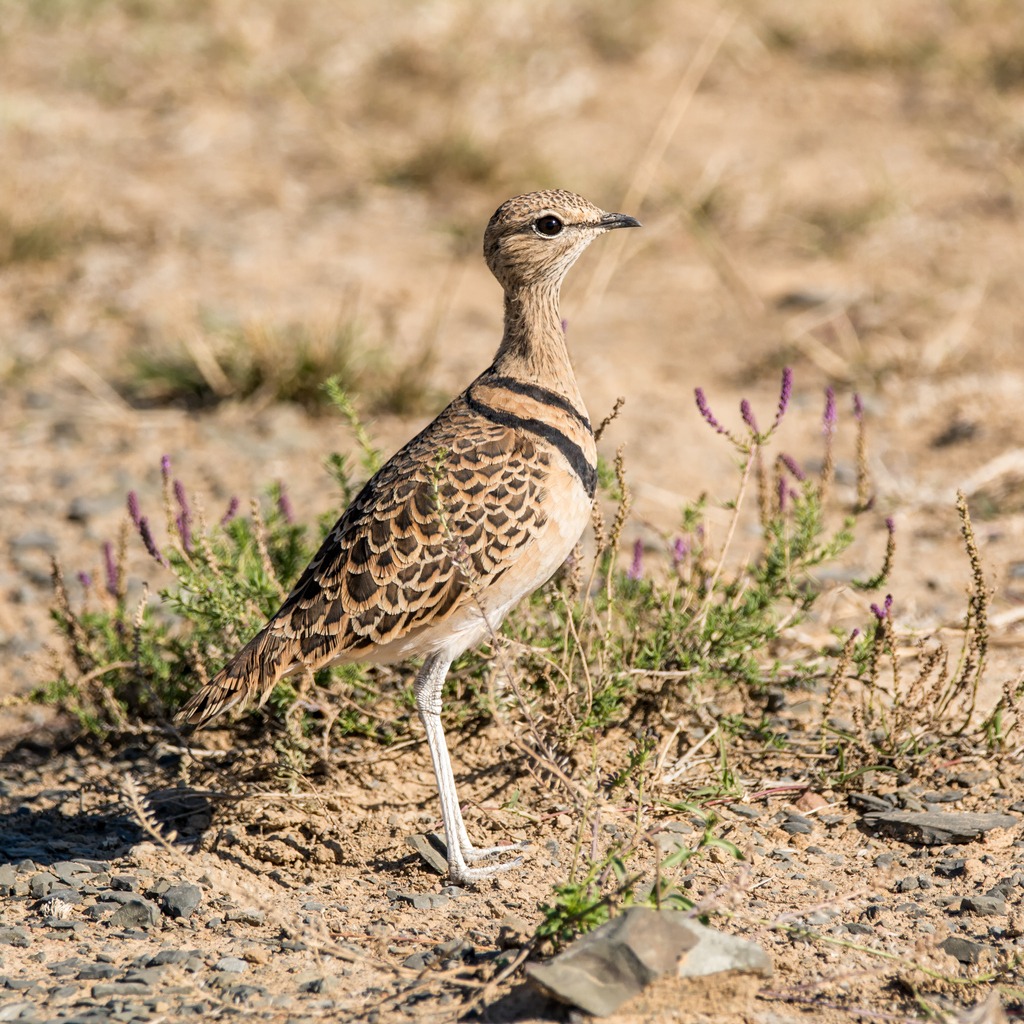It is a striking, enigmatic bird, thriving in grasslands and savannas, and has adapted to microhabitats, such as overgrazed patches, pans, and gravelly plains. Adults sport a scaly pattern on the back, while two bands occur across the chests. Immature birds have the adult plumage sans the chest bands. A rising chain of piercing whistles characterizes their call. The bird is quite similar to the Three-banded Courser but more active in the day, with less cryptic plumage.
Read further to know more about the Double-Banded Courser.
What is a Double-banded Courser?
Double-banded Courser (Rhinoptilus africanus), also called the two-banded courser, is a bird species belonging to the family Glareolidae. The family has a broad range, but none of its species can be found in the New World. The courses are easily recognizable from the other members of their order through their unique, arched bills, which nostrils are situated at the base.
Its seven levels of classification are as follows:
Kingdom: Animalia
Phylum: Chordata
Class: Aves
Order: Charadriiformes
Family: Glareolidae
Genus: Rhinoptilus
Species: R. africanus
Double-banded Courser Physical Description
Double-Banded Courses sports a pale crown, streaked with brown to black feathers. A thin black stripe extends from the bill’s base through their eyes until the nape. As their name suggests, they have two bands, both occurring at the chest. Cheeks and neck are light-brownish with black bars, while the neck and throat are white. Back feather and wing tetrices are sandy brown, with dark cores, and brownish-yellow edgings, forming a scaly pattern. Eyes are dark brown. The bill is short and blackish, while legs and feet have a dull grey tone. These birds grow from 7.87 to 9.4 inches or 20-24 centimeters and weigh about 64 to 109 grams.
Where can they be spotted?
Double-banded Courses have two separate ranges in Africa, south of the Sahara. The first range includes Namibia, Botswana, Zimbabwe, and South Africa, while the other involves Somalia, Tanzania, Kenya, and Ethiopia. These birds frequent open plains with a combination of bare ground and short grasses, usually across shrublands, pans, dry beds and rivers, overgrazed grasslands, and gravelly or stony semi-deserts.
Interesting Facts You Should Know About the Double-banded Courser
Double-banded Courses feeds primarily on insects, such as termites, beetles, and ants. It has a distinct foraging technique. Using their strong legs, they quickly run after the detected prey then jab the food items with its bill. These birds are enigmatic, and seldomly observed.
These birds are monogamous and will form life-long bonds with their mates. Their courtship antics involved the male dancing in semi-circles around the female, accompanied by quick hopping motions.
Double-banded Courses are solitary nesters and build their nest on bare ground, sometimes lining them plant matter, pebbles, or placing around mammal droppings. The egg-laying season happens throughout the year, but peaks from August to December.
The female will lay a single egg, which both sexes incubate in intervals, usually every 90 to 120 minutes. The incubation period lasts about 25 to 26 days. After hatching, the brood will be able to leave the nest within 24 hours, which both parents feed with smaller insects. The chick will fledge after 5 to 6 weeks but remain under parental care until the next breeding period.
Double-banded Coursers are not threatened and are common in their range. Their population appears to have benefitted from overgrazing and erosion. These birds are evaluated as Least Concern (LC) under the IUCN Red List.
WILDLIFE PARKS AND RESERVES WHERE THIS SPECIES IS FOUND:
BOTSWANA
SOUTH AFRICA
Kalahari Gemsbok National Park
NAMIBIA
ZAMBIA
ZIMBABWE
BOTSWANA BIRDS | SOUTH AFRICA BIRDS
NAMIBIA BIRDS | ZAMBIA BIRDS | ZIMBABWE BIRDS


